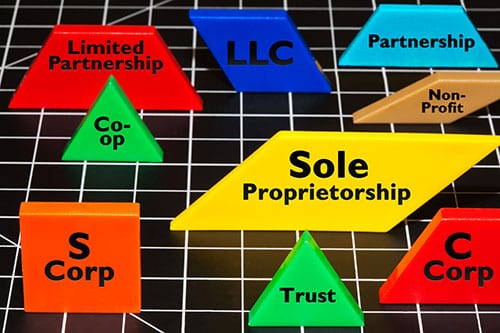Changing Your Business Legal Structure
Usually, the most time a business owner spends in considering legal structures is when they are first starting up their business. If they are a sole proprietor, particularly a freelancer, they just stick with sole proprietorship for the simplicity and lower costs of formation. If they have some special liabilities, such as a business that could result in customer injury, then they may consider the LLC, Limited Liability Company structure. For the most part, the legal structure of the company is not considered again until there are some material changes in the business.
Why would you change your business legal structure?
Changing the legal type or business structure is common for growing companies, as there are changes in the business that can drive a change in structurei.
- Liability issues – Even a small business operating as a sole proprietorship has a risk profile. Particularly as the business grows, more customers and the complexity of the products and services they buy can bring about liability concerns. To protect the assets of not only the business but the owners as well, changing the structure to one with some legal liability protections can be a good idea.
- Employees – Once a business brings on employees, the risk profile changes as well. There are legal ads all over the place promising monetary compensation for employees who sue their employers. Even a baseless lawsuit that fails costs the business a lot of money in legal fees. There are also legal issues when an employee is hurt on the job.
- Taxation – The most common reason for a business structure change is for business taxation issues. The business is usually a pass-through entity, such as a sole proprietorship, LLC, or partnership, and the business cannot retain income. Switching to a corporate structure frees the business up to grow faster with retained earnings for expansion.
- Ownership changes – Owners may die, leave the business, or new owners may be taken on. The most obvious example is that of a sole proprietorship that takes on another owner. It must convert to another structure, such as a partnership, S-Corp, or LLC.
These are all valid reasons to change the legal structure of a business. It is not a simple process, as the I.R.S. and local/state regulations bring about necessary paperwork, forms, and even changes in how business is conducted in some cases.
The basic checklist items for changing the legal structure of a business.
There are hoops to jump through, as government and the tax people are involved. They include:
- Moving from the simple sole proprietorship to another structure will require registration with the state in which the business is located.
- Usually, a new employer identification number (EIN) is required for tax filingii.
- Changes must be made with all the local, state, and federal agencies where the business is listed or registered for things like sales taxes, licenses, and other business activities.
- You may need to change the name under which the business is registered and active.
- Do not forget to notify customers, vendors, and other business partners like accountants and lawyers.
The need to change the legal structure of a business is usually related to success and growth but be sure to cover all the bases.
i Changing business type, TheBalanceSMB.com
ii Do I Need a New EIN? – IRS.gov

